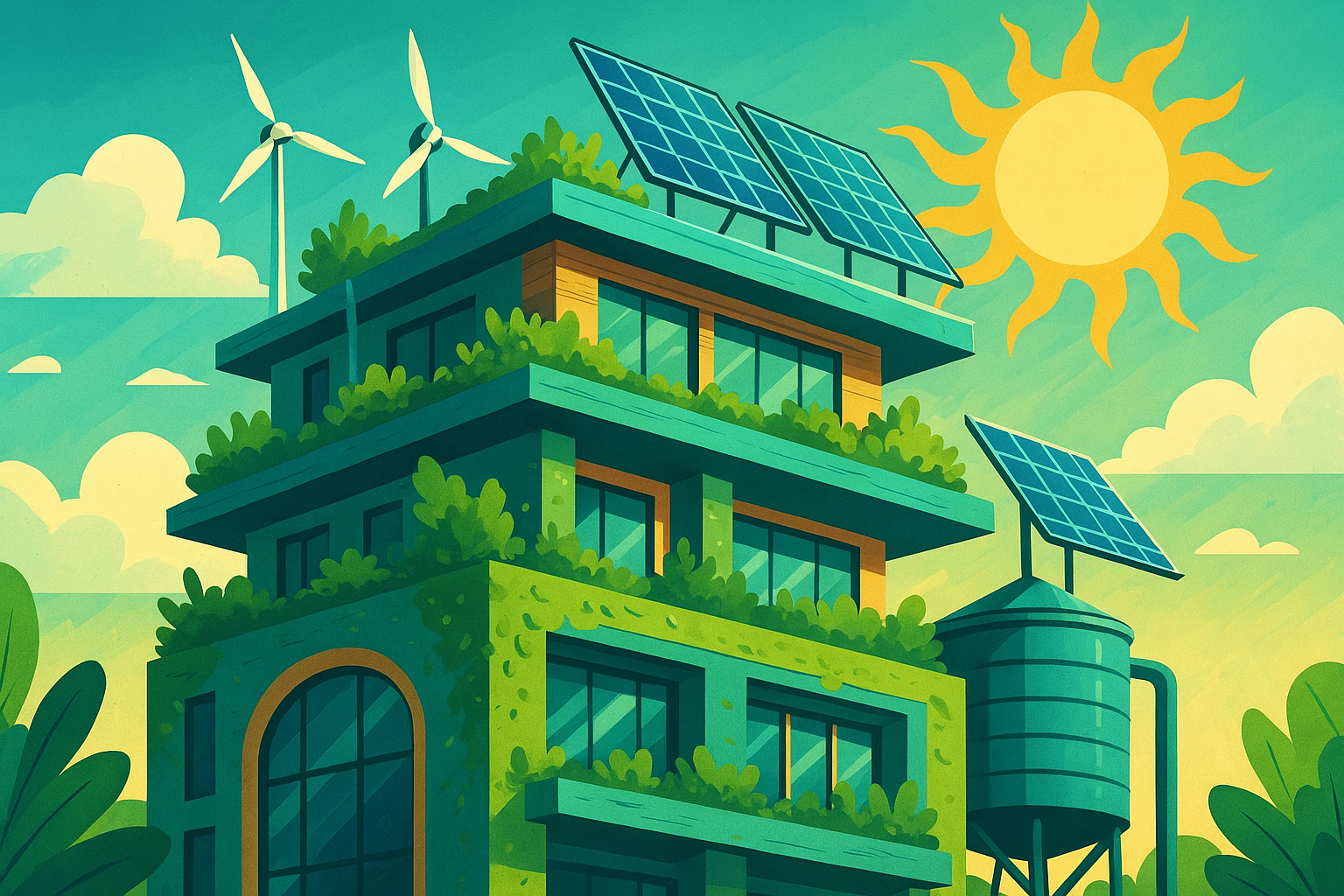Planning = Peace of Mind
If you’ve ever woken up in the middle of the night wondering where the heck the foundation crew went—this one’s for you. Planning may not be the most glamorous part of your construction project, but it’s absolutely the most powerful. Think of it as the secret sauce that keeps things calm, clear, and (mostly) on schedule.
Whether you’re building a cozy home, a new office, or something in between, proper planning is like giving your future self a big, grateful high-five. Because let’s face it—surprises in construction are rarely the fun kind.
So how do you plan without going overboard or burning out before the first shovel hits the dirt?
Let’s dig in.
Start Early—Even Before You Think You Need To
The earlier you start planning, the better. You don’t need blueprints right away or a full team of experts on standby. Just getting your ideas on paper is a huge first step.
Start by asking yourself:
- What am I building?
- Why am I building it?
- What do I need versus what do I want?
You’d be amazed how many people jump into a project without clear answers to these questions. (Spoiler alert: that usually doesn’t end well.)
Once you’ve got the basics down, you can start exploring timelines, budgets, and potential locations. No pressure to have everything perfect—just get the big picture sketched out. It’ll save you a lot of stress later on.
And hey, if you’re not sure where to begin, companies like CEESCO are pretty great at helping people get unstuck in this early phase. Think of them as that calm, collected friend who actually reads the instructions before building IKEA furniture.
Break It Down (Like, Really Break It Down)
Big projects are exciting, but they can also be totally overwhelming. The key? Break it into bite-sized pieces.
Instead of thinking about the whole building all at once, zoom in. Focus on individual phases like:
- Design and approvals
- Permits and inspections
- Site prep
- Construction
- Finishing touches
Give each phase its own timeline, budget estimate, and task list. Suddenly, the giant scary project becomes a bunch of smaller, doable chunks. You can celebrate little wins along the way, which makes the process feel way more human—and less like a never-ending to-do list.
Even better, when hiccups happen (and they will), it’s easier to adjust one part of the plan without throwing everything else into chaos.
Bonus tip: keep things visual. A simple spreadsheet or color-coded calendar can make all the difference. If you’re a visual thinker, mapping everything out on a whiteboard or using sticky notes can turn planning into something almost… fun?
(Okay, “fun” might be pushing it—but definitely less painful.)
Plan for Chaos (Because It’s Coming Anyway)
Here’s a hard truth: no matter how beautifully you plan, construction loves to throw curveballs.
Materials get delayed. Weather refuses to cooperate. That one wall you thought would be simple turns out to be a secret labyrinth of pipes from 1973.
The trick is not to prevent every single problem (impossible), but to build wiggle room into your plan. Give yourself buffer time. Pad the budget just a little. Have a Plan B, and maybe even a Plan C, for critical parts of the project.
Also, talk to people who’ve been through it before. Builders, designers, engineers—they’ve seen it all. (And yes, this is another subtle nod to CEESCO, whose team has worked through more plot twists than a Netflix drama.)
They can help you prepare for what you don’t even know to expect yet. Which, honestly, is the best gift you can give yourself in a construction project.
Planning Is Power (and Sanity)
When you have a clear plan, you don’t just build better—you feel better.
You can make decisions with confidence. You know where things are headed. You spend less time reacting and more time leading the process.
Most importantly, you give yourself space to actually enjoy the project—because you know where it’s going and how it’s getting there.
So grab that notebook, open that spreadsheet, or call that trusted planning buddy. Your future self—and your blood pressure—will thank you.
And if you ever feel stuck or unsure, it’s okay to lean on professionals. Companies like CEESCO exist for exactly this reason: to help people like you build smart, solid, and (yes!) low-stress projects.
Because building something should feel exciting—not exhausting.
Choosing the Right People Matters (A Lot)
You can have the perfect plan, a Pinterest-worthy design, and a generous budget—but if you’ve got the wrong team? Disaster.
It’s like trying to cook a gourmet meal with people who’ve never seen a stove. Things might look okay at first, but eventually, someone’s burning the sauce.
When it comes to construction, your crew is everything. The people you choose to bring your project to life can make the process smooth, enjoyable—even fun. Or they can make it feel like you’re trying to herd cats in a hurricane.
Let’s make sure it’s the first one.
Not Just Skill—Fit Matters Too
When choosing people for your project—whether it’s an architect, engineer, builder, or consultant—yes, technical skills matter. A lot.
But you also want people who understand your vision, communicate clearly, and don’t disappear halfway through the job.
It’s like dating, but with hard hats. You’re not just hiring talent—you’re bringing someone into a high-stakes relationship with budgets, timelines, and (hopefully) no drama.
Here’s a good test: can you have an honest conversation with them? Can you ask dumb questions without feeling dumb? If yes, you’re off to a great start.
Good teams listen. Great teams anticipate. The best ones ask the questions you didn’t even think of yet.
This is also why people often turn to firms like CEESCO—they’re known for pairing their technical expertise with solid communication and project awareness. They’re one of those teams that actually makes your life easier instead of more complicated. (Which is rare. And appreciated.)
Red Flags Are Real—Pay Attention
When you’re hiring for your project, gut feelings matter more than you think.
Did they ghost you after your first call? Do they avoid giving you clear timelines? Do they promise everything will be “easy”? (Spoiler: it won’t be.)
These are red flags—and ignoring them now means you’ll be dealing with bigger issues later.
You want people who:
- Answer questions honestly (even when it’s not what you hoped to hear)
- Give realistic timelines and budgets
- Admit when they’re not the right fit for something
- Return your emails (seriously, why is that so hard?)
Your team should make you feel like you’re part of the process—not like you’re bothering them for updates. Construction is a team sport, and you deserve teammates who show up and play hard.
If someone seems flaky or vague during the hiring process, trust that it won’t magically get better once the project starts.
Good People Bring Their Own Good People
Here’s one of the best-kept secrets in construction: good people tend to know other good people.
So if you’ve found a solid architect, engineer, or project manager, ask them who they like to work with. Chances are, they’ve got a list of reliable folks they’ve collaborated with before—and those teams already have chemistry.
That kind of synergy is golden. When people know each other’s work styles and communication rhythms, everything just flows better.
CEESCO, for example, often gets pulled into projects through referrals because they’ve already worked well with other consultants or firms on previous builds. That kind of reputation isn’t built overnight—but it speaks volumes when it’s there.
It’s also why building a strong core team from the start saves you time and headaches later. Less finger-pointing, fewer dropped balls, and way fewer “Oh no, who was supposed to handle that?” moments.
Ask Questions, Then Ask Some More
You don’t need to be an expert to choose good people—you just need to be curious and pay attention.
Ask them:
- What kinds of projects they’ve worked on
- What their biggest challenges have been
- How they communicate with clients
- What happens when something goes wrong
The way they answer tells you everything. Are they open and honest? Do they take ownership or play the blame game? Can they explain things in a way that makes sense?
And please—don’t be afraid to ask “silly” questions. The right people won’t make you feel silly. They’ll respect the fact that you want to understand the process.
That’s the kind of relationship you want—one built on trust, not just contracts.
The People Make the Project
At the end of the day, your construction project isn’t just about bricks, beams, or design. It’s about people.
People who show up, solve problems, laugh with you when things go sideways, and celebrate when it all comes together.
When you choose wisely, the journey can be just as satisfying as the result.
And if you’re not sure where to begin, companies like CEESCO are great at helping clients connect with the right experts at the right time. No pressure, no overselling—just solid support when (and if) you need it.
Because in construction, as in life, who you surround yourself with matters more than you think.
The Power of Clear Communication
You can have the best design, the most skilled team, and a rock-solid budget—but if communication falls apart, everything else does too.
It’s like trying to build a house with mismatched blueprints. You might end up with something that stands, but probably not something you’d want to live in.
Clear communication is the invisible glue holding your construction project together. And no, we’re not just talking about text messages and email chains. We’re talking about people actually understanding each other, making decisions together, and staying on the same page from day one to move-in day.
Let’s break down how that works—and why it matters way more than most people realize.
Say What You Mean (And Make Sure They Get It)
You don’t need to sound like an architect or engineer to communicate clearly. You just need to say what you want, ask questions, and make sure the person on the other end actually understands.
That last part? Super important.
Because sometimes, you say, “I want open space,” and someone else hears, “Let’s knock down every wall.”
Or you ask for a modern vibe, and get something that looks like a spaceship landed in your backyard.
Clear communication means checking in regularly. It means confirming what was discussed—ideally in writing—and making space for follow-up questions.
It’s also about listening. Not just hearing words, but really understanding what the other person is trying to say—even if they don’t explain it perfectly.
Teams like CEESCO are pretty good at this. They’re known for making sure everyone is aligned before jumping into execution. That way, people aren’t constantly backtracking, redoing work, or fixing misunderstandings that could’ve been avoided.
Meetings Don’t Have to Be Boring (or Pointless)
We know, we know—nobody loves meetings. But in a construction project, regular check-ins are kind of magical.
They give everyone a chance to speak up, ask questions, flag issues, and make decisions together.
When done right, meetings save time and reduce stress. You avoid the dreaded “Wait, who was supposed to do that?” and the painful “I thought you said next Friday…”
The trick is to keep them short, focused, and consistent.
Same day, same time, same people. Bonus points if there’s coffee involved.
Use simple language. Bring visuals if needed. Make decisions, assign tasks, and then follow up in writing afterward.
No jargon marathons or endless tangents about flooring samples from six months ago.
Good communication is respectful of everyone’s time—and it makes sure no one is left in the dark.
One Channel to Rule Them All
Ever tried managing a project through texts, phone calls, emails, WhatsApp, and sticky notes?
Spoiler: it doesn’t go well.
Pick one main communication channel that everyone uses. Maybe it’s email. Maybe it’s a shared folder with notes. Maybe it’s a project management tool like Trello or Asana.
Whatever you pick, the goal is clarity and consistency. Everyone knows where to look, what’s been decided, and what’s coming next.
You don’t want your builder getting specs from a 3-week-old voicemail while your designer is following an email from Tuesday.
Even if you’re working with consultants or external teams (like CEESCO, for instance), setting one communication hub helps everyone work together smoothly.
It’s not about being fancy—it’s about being organized.
And let’s be honest: future-you will be very thankful when you’re not digging through 72 messages trying to find the paint color someone swore they told you about.
Overcommunicate (Yes, Really)
If you’re ever in doubt about whether you should say something, just say it.
Overcommunicating might feel a little extra, but in construction, extra is usually good.
Clarify expectations. Confirm appointments. Repeat decisions. Remind people what day the inspectors are coming.
You’re not being annoying—you’re being smart.
Most issues in construction come down to miscommunication. Something that wasn’t said, something that was misunderstood, or something that got lost in the shuffle.
By being that person who double-checks and follows up, you keep everything moving forward.
And if someone on your team rolls their eyes? That’s fine. They’ll thank you later when the permits are submitted correctly and the timeline hasn’t exploded.
A Project That Talks Is a Project That Works
At the end of the day, communication isn’t just a nice-to-have—it’s a must-have. It keeps your budget intact, your team aligned, and your stress levels at a reasonable level.
So don’t be shy about speaking up, checking in, or asking for clarification. That’s not being difficult—it’s being a great project leader.
And if you ever feel like things are getting fuzzy, don’t panic. That’s your cue to regroup, refocus, and get everyone talking again.
Sometimes, all it takes is a simple question—“Can we go over that one more time?”—to keep the whole ship sailing straight.
Clear communication doesn’t guarantee a perfect project, but it gives you the best chance at a really good one.
And if you’re ever looking for a team that values communication as much as quality?
Well… there’s always CEESCO.
Expect the Unexpected: Managing Surprises Like a Pro
If you’ve ever opened a wall and found an entire pipe maze from the 1960s—you already know what we mean.
Construction loves surprises. Not the good kind like “free donuts on site,” but the kind that makes you blink twice and say, “Wait… what is that doing here?”
Surprises happen in every project, no matter how well you plan. The trick isn’t avoiding them altogether (spoiler: you can’t), but knowing how to handle them like a pro when they do show up.
Because in construction, calm beats chaos every time.
Stuff Happens—It’s Not (Always) a Disaster
We all want things to go perfectly, but construction has a way of humbling even the best of us.
There’s always a chance something unexpected will pop up—a late delivery, a missing permit, a rainy week, or a ceiling beam no one planned for.
But here’s the good news: most surprises aren’t the end of the world.
They just need quick thinking, a level head, and maybe a little creative problem-solving.
You’ll save yourself so much stress if you start your project with the mindset that something will go sideways at some point. That way, when it does, you’re ready—emotionally and logistically.
It’s like packing an umbrella even if the forecast says sunshine. Hope for the best, prepare for the weird.
The Magic of Buffer Zones
One of the easiest ways to manage surprises is to build in buffers—time, budget, and energy.
Give yourself more time than you think you’ll need. Pad the schedule just a bit, especially around milestones like inspections or big deliveries.
If you think something will take 5 days, plan for 7. If you hope to finish by Friday, aim for the following Tuesday instead.
Same goes for the budget. Add a 10–15% cushion if you can. That way, if you suddenly need an extra truckload of gravel or a specialty permit, it won’t wreck your finances—or your mood.
And don’t forget to budget for mental energy. Surprises can be frustrating, but they’re way less stressful when you have room to breathe.
People who plan for chaos don’t freak out when it arrives—they just switch to Plan B (or C, or D) and keep going.
Teams like CEESCO are really good at helping clients build flexibility into their project plans without making things feel overwhelming. It’s one of those quiet superpowers that ends up saving a lot of sanity down the line.
Communication = Crisis Control
When something unexpected happens, the first thing you should do is communicate.
Talk to your team. Loop in your contractor. Ask questions. Confirm facts.
The faster everyone understands what’s going on, the faster you can decide what to do about it.
Don’t assume someone else will fix it. And definitely don’t let confusion sit and simmer. That’s how small issues turn into expensive ones.
A surprise doesn’t have to derail your project—as long as the right people know what’s happening and work together to fix it.
This is where having a team that communicates well (and stays calm under pressure) really shines. You’ll know things are under control, even when the plan suddenly changes.
Stay Flexible, Stay Friendly
You can’t always control what happens, but you can control how you respond.
Flexibility is your best friend in construction—and kindness is a close second.
When something goes wrong, people will look to you. If you panic, they’ll panic. If you stay cool and solution-focused, they will too.
This doesn’t mean pretending everything’s perfect. It just means approaching problems with curiosity instead of chaos. Ask, “What are our options?” instead of, “Who messed this up?”
And remember—mistakes and surprises are often how the best lessons happen. You’ll end up a more confident project leader by working through the curveballs.
That’s one of the reasons professionals like the team at CEESCO focus so much on process and support. They’ve seen enough plot twists to know that flexibility, not perfection, is what really gets projects across the finish line.
Roll With It—and Keep Building
The truth is, surprises are part of the adventure. Annoying? Yes. Frustrating? Definitely. But also, sometimes, just a little bit funny.
(Like the time a crew found a 1980s refrigerator sealed inside a wall. No one had an explanation.)
The key is to keep moving. Adjust the plan. Talk it out. And lean on your team when things get bumpy.
You’ve already done the hard work of planning and building the right crew—now it’s just about rolling with the punches and trusting the process.
Because managing surprises like a pro doesn’t mean avoiding problems.
It means navigating them with grace, humor, and a whole lot of resilience.
And hey—when in doubt, there’s always CEESCO to bounce ideas off of or lend a hand if you need an expert voice.
Now go forth and build (just maybe bring that umbrella—just in case).




